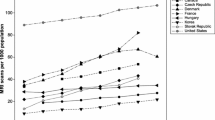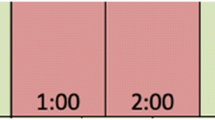Abstract
Magnetic resonance imaging (MRI) is widely used in diagnostic medicine and contributes significantly to US health care spending. Scheduling MRI jobs involves uncertainties (e.g., patient arrival time, scanning time, and preparation time) that can lead to excessive delays and high costs in MRI operations. This study addresses real-time decision making in use of MRI scanners based on job assignment and sequencing decisions that override the appointment schedule. The decisions are made using real-time information of the waiting patients, the utilization status of the MRI scanners, and the partially revealed uncertainties of scanning times of current patients. A sequential decision-making framework and a simulation-based solution method are proposed to utilize massive real-time information and match the use of MRI rescheduling in practice. The results are then compared with a real case in a large midwestern academic medical center in the US. This study illustrates that the proposed method reduces patient waiting time by 21.7% and improves utilization of MRI scanners by 23.0%. An optimality gap of 13.6% is provided when compared to off line scheduling methods based on a mixed integer programming (MIP) model. The number of simulation replications in this approach uses the ranking and selection method, which not only reduces solution time, but also provides solution quality guarantees wherein the probability of errors in the proposed method for one day is less than 0.1%. In 100 randomly generated workday experiments, all of the scheduling decisions given by the proposed method perform better than current policy, with an average reduction of 17.93 minutes in each patient’s waiting time and an improvement of scanner utilization by 7.20%.





Similar content being viewed by others
References
Albers S (2009) Online scheduling. In: Introduction to scheduling, Robert, Yves, and Frédéric Vivien, eds. CRC Press, pp 71–98
Ahmadi-Javid A, Jalali Z, Klassen KJ (2017) Outpatient appointment systems in healthcare: A review of optimization studies. European Journal of Operational Research 258(1):3–34
Baron O, Berman O, Krass D, Wang J (2016) Strategic idleness and dynamic scheduling in an open-shop service network: Case study and analysis. Manufacturing & Service Operations Management 19(1):52–71
Belz R, Mertens P (1996) Combining knowledge-based systems and simulation to solve rescheduling problems. Decision Support Systems 17(2):141–157
Cayirli T, Veral E (2003) Outpatient scheduling in health care: a review of literature. Production and operations management 12(4):519–549
Cappanera P, Visintin F, Banditori C, Di Feo D (2019) Evaluating the long-term effects of appointment scheduling policies in a magnetic resonance imaging setting. Flexible Services and Manufacturing Journal 31(1):212–254
Cho H, Easwaran A (2018) Flow network models for online scheduling real-time tasks on multiprocessors. arXiv:1810.08342
Erdogan SA, Gose A, Denton BT (2015) Online appointment sequencing and scheduling. IIE Transactions 47(11):1267–1286
Fu MC (ed) (2015) Handbook of simulation optimization. vol. 216, Springer, New York
Geng N, Xie X (2012) Optimizing contracted resource capacity with two advance cancelation modes. European Journal of Operational Research 221(3):501–512
Geng N, Xie X, Jiang Z (2013) Implementation strategies of a contract-based MRI examination reservation process for stroke patients. European Journal of Operational Research 231(2):371–380
Green LV, Savin S, Wang B (2006) Managing patient service in a diagnostic medical facility. Operations Research 54(1):11–25
Gocgun Y (2018) Simulation-based approximate policy iteration for dynamic patient scheduling for radiation therapy. Health Care Management Science 21:317. https://doi.org/10.1007/s10729-016-9388-9
Gupta D, Denton B (2008) Appointment scheduling in health care: Challenges and opportunities. IIE Transactions 40(9):800–819
Kim J, Randhawa RS, Ward AR (2018) Dynamic scheduling in a many-server, multiclass system: The role of customer impatience in large systems. Manufacturing & Service Operations Management 20(2):285–301
Knutsen M (2019) The use of context data in elective surgery scheduling and planning. A literature review (Master’s thesis, UiT Norges arktiske universitet)
Lee K, Zheng F, Pinedo ML (2019) Online scheduling of ordered flow shops. European Journal of Operational Research 272(1):50–60
Liu N, Ziya S, Kulkarni VG (2010) Dynamic scheduling of outpatient appointments under patient no-shows and cancellations. Manufacturing & Service Operations Management 12(2):347–364
Luo J, Kulkarni VG, Ziya S (2012) Appointment scheduling under patient no-shows and service interruptions. Manufacturing & Service Operations Management 14(4):670–684
Luo L, Zhou Y, Han BT et al (2019) An optimization model to determine appointment scheduling window for an outpatient clinic with patient no-shows. Health Care Management Science 22:68. https://doi.org/10.1007/s10729-017-9421-7
Millhiser WP, Veral EA (2019) A decision support system for real-time scheduling of multiple patient classes in outpatient services. Health Care Management Science 22:180. https://doi.org/10.1007/s10729-018-9430-1
OECD (2019) Magnetic resonance imaging (MRI) units (indicator). https://doi.org/10.1787/1a72e7d1-en
OECD (2014) Magnetic resonance imaging (MRI) exams, total 2014/1. In: Health: Key tables from OECD. OECD Publishing, Paris. https://doi.org/10.1787/mri-exam-total-table-2014-1-en
Ouelhadj D, Petrovic S (2009) A survey of dynamic scheduling in manufacturing systems. Journal of Scheduling 12(4):417
Pang B, Xie X, Song Y, Luo L (2018) Surgery scheduling under case cancellation and surgery duration uncertainty. IEEE Transactions on Automation Science and Engineering 16(1):74–86
Papanicolas I, Woskie LR, Jha AK (2018) Health care spending in the United States and other high-income countries. Jama 319(10):1024–1039
Qian XL, Tang LX, Liu WX (2001) Dynamic scheduling: a survey of research methods. Control and Decision 16(2):141–145
Suresh V, Chaudhuri D (1993) Dynamic scheduling–a survey of research. International Journal of Production Economics 32(1):53–63
van Beek EJ, Kuhl C, Anzai Y, Desmond P, Ehman RL, Gong Q, Lim CT et al (2019) Value of MRI in medicine: More than just another test? Journal of Magnetic Resonance Imaging 49(7):e14–e25
Wang JB, Liu F, Wang JJ (2019) Research on m-machine flow shop scheduling with truncated learning effects. International Transactions in Operational Research 26(3):1135–1151
Wang X, Truong VA (2017) Multi-priority online scheduling with cancellations. Operations Research 66(1):104–122
Yamamoto M, Nof SY (1985) Scheduling/rescheduling in the manufacturing operating system environment. International Journal of Production Research 23(4):705–722
Zacharias C, Pinedo M (2017) Managing customer arrivals in service systems with multiple identical servers. Manufacturing & Service Operations Management 19(4):639–656
Author information
Authors and Affiliations
Corresponding author
Ethics declarations
Conflicts of interest
Nothing to report.
Rights and permissions
About this article
Cite this article
Pang, B., Xie, X., Ju, F. et al. A dynamic sequential decision-making model on MRI real-time scheduling with simulation-based optimization. Health Care Manag Sci 25, 426–440 (2022). https://doi.org/10.1007/s10729-022-09592-6
Received:
Accepted:
Published:
Issue Date:
DOI: https://doi.org/10.1007/s10729-022-09592-6




